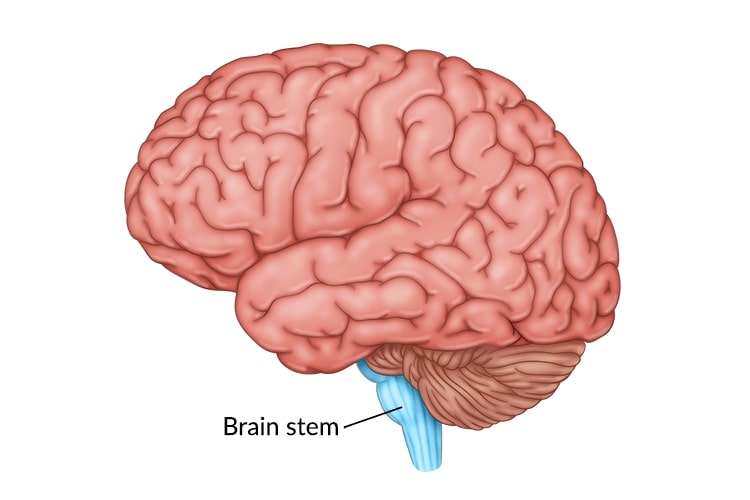Brain Stroke Treatment in Solapur
Overview
A stroke occurs when the blood supply to a portion of the brain is interrupted or reduced, depriving the brain tissue of oxygen and nutrients. Synapses start to bite the dust in no time.
A stroke is a medical emergency that must be treated right away. Brain damage and other issues can be avoided with early intervention.
The good news is that stroke deaths are now far lower than in the past. Effective therapies can also help avoid stroke-related impairment. To reduce brain damage, strokes must be recognised and treated as soon as possible. Valsangkar Hospital provides the best brain stroke treatment in Solapur.

There are three different types of strokes:
- Strokes caused by ischemia
- Strokes with haemorrhage
- Mini-strokes, also known as transient ischemic attacks (TIAs),.
Symptoms
If you think you or someone you know is having a stroke, pay close attention to when the symptoms started. When provided quickly after a stroke, several therapy options are most successful, andat Valsangkar Hospital, Brain Stroke Treatment in Solapur is available
Stroke symptoms and signs include:
- Having trouble communicating and understanding what others are saying. You might be perplexed, stutter, or have difficulty understanding communication.
- Facial, arm, or leg numbness or paralysis. Numbness, weakness, or paralysis of the face, arm, or leg may occur suddenly.This usually just affects one side of your body. At the same moment, try to raise both arms over your head. In the event that one arm starts to fall, you might be suffering a heart attack.
- One or both eyes have vision problems. You may experience double vision, hazy vision, or darkened vision in one or both eyes.
- A sudden, severe headache that is accompanied by vomiting, dizziness, or altered consciousness could be a sign of a stroke.
- Walking is difficult. You might trip or lose your footing. You can also feel dizzy or lose your coordination.
Causes
A hindered corridor (ischemic stroke) or a spilling or blasting vein are the two essential reasons for stroke (hemorrhagic stroke). A transient ischemic attack (TIA) is a brief interruption of blood flow to the brain that, in some people, does not result in long-term symptoms.
Stroke with ischaemia
The most well-known kind of stroke is this one. It happens when the blood vessels in the cerebrum tighten or block, bringing about a considerably limited blood stream (ischemia). Greasy stores in veins, blood clusters, and other flotsam and jetsam that travel through your framework and hotel in your mind’s blood supply routes cause irritation and block or restrict blood vessels.
Stroke with haemorrhage
At the point when a vein in your cerebrum holes or cracks, it causes a hemorrhagic stroke. Brain haemorrhages can be caused by a variety of conditions that affect your blood vessels.
The following are factors linked to hemorrhagic stroke:
- High blood pressure that is uncontrolled
- Taking too many blood thinners (anticoagulants)
- Protein stores in the dividers of veins cause vessel divider debilitating (cerebral amyloid angiopathy)
- Hemorrhage from an ischemic stroke
When Should You See A Doctor?
If you observe any signs or symptoms of a stroke, seek medical help right away, even if they seem to come and go or disappear completely.
Think “fast” and follow these steps:
- Request that the person smile.
- Request that the person lift both arms. Is one of your arms drooping? Is one arm incapable of rising?
- Request that the other person repeat a simple phrase back to you. Is his or her speech unusual or slurred?

Risk Factor
Many things can raise your chances of having a stroke. The following are some potentially treatable stroke risk factors:
Risks associated with one’s way of life
- Obesity or being overweight
- Physical sedentary
Medical danger signs
- Blood pressure problems
- Secondhand smoke exposure or cigarette smoking
- High cholesterol levels
- Diabetes
The Stroke Diagnosis
The most important aspect of effective treatment is an accurate diagnosis. The following tests are used to determine the risk of stroke:
- Physical exam
- Blood tests
- Computed tomography (CT) scan
- MRI scan
- Carotid ultrasound
Stroke Treatment:
Different forms of stroke require different treatments, which may include drugs, surgical intervention, and recovery and rehabilitation.Valsangkar Hospital provides the best brain stroke treatment in Solapur.
